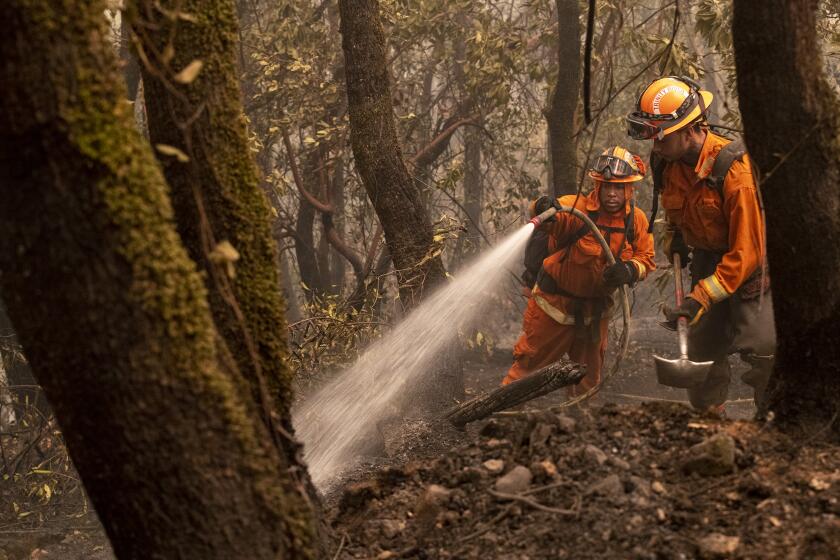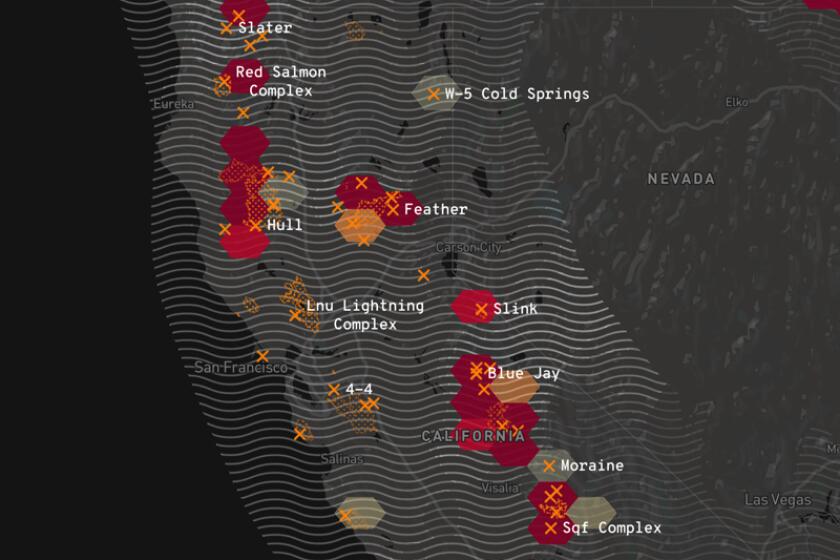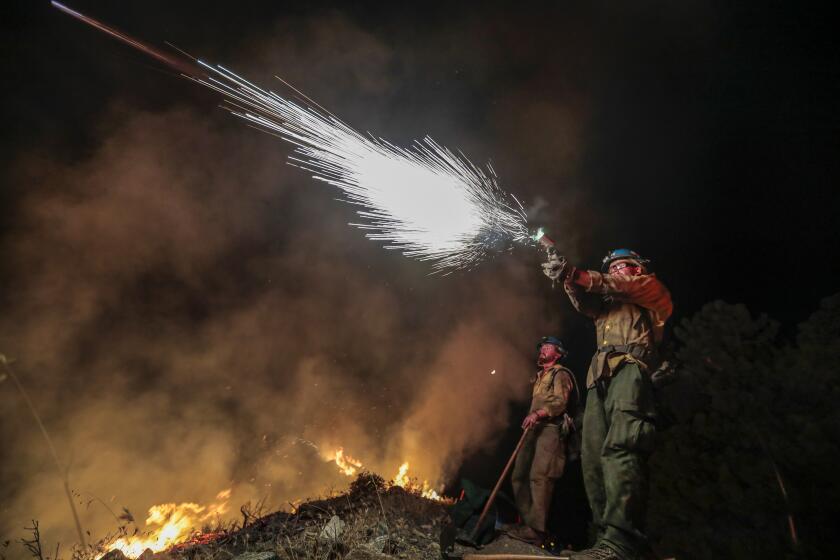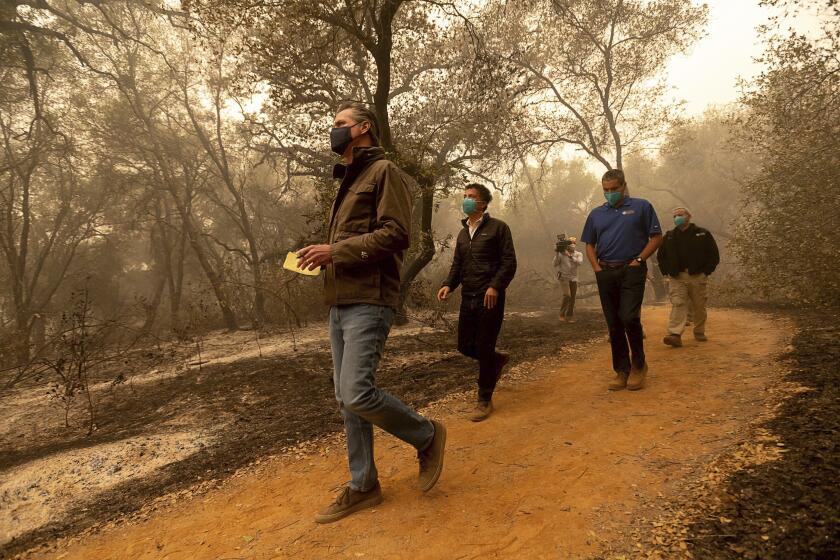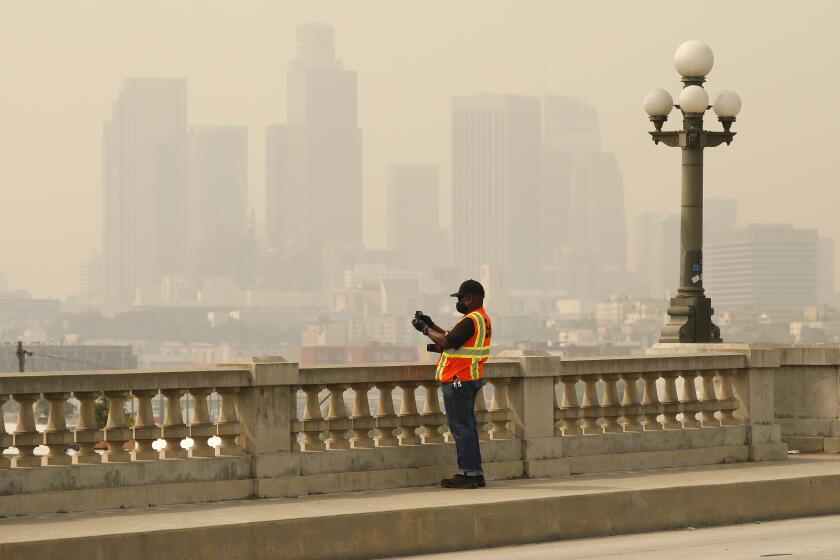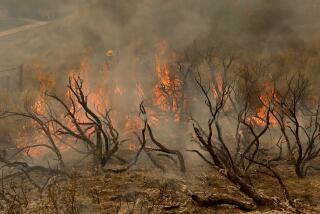15 fatalities confirmed. North Complex now among state’s top 5 deadliest fires
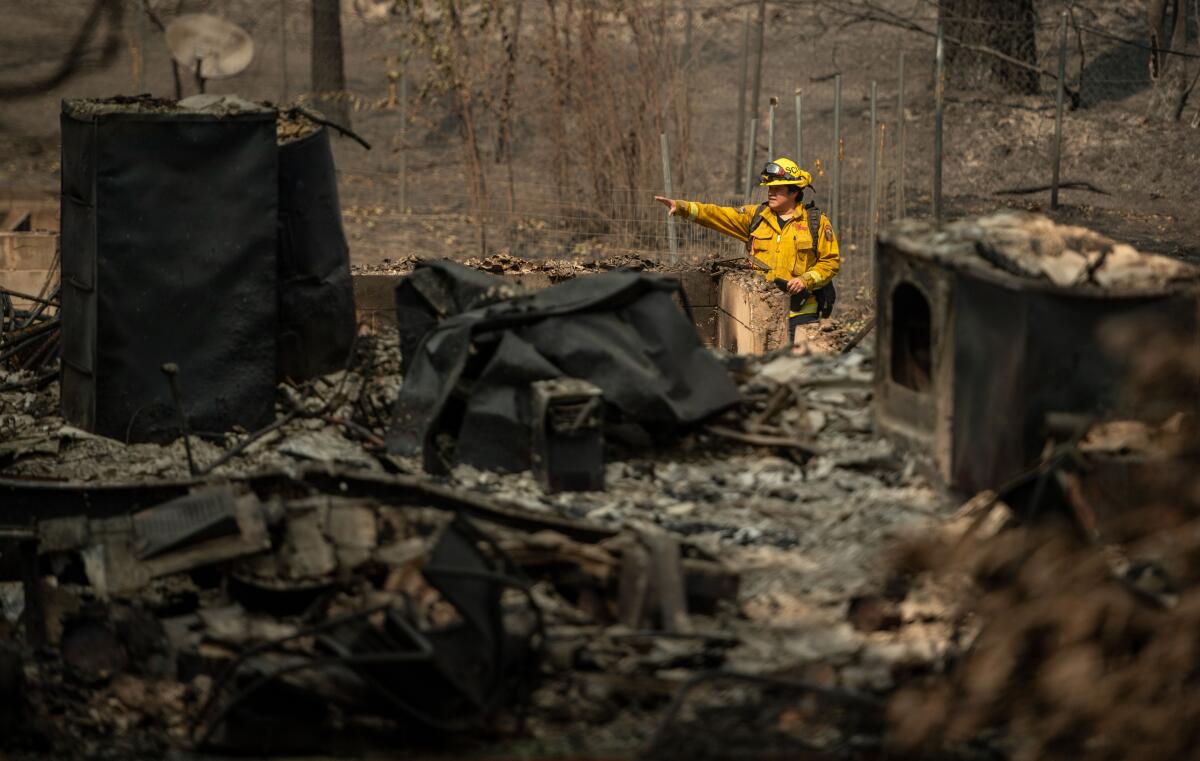
The confirmed death toll from California’s unprecedented firestorm has risen to 25 as crews work to hem in some two dozen major blazes still burning statewide.
Another fatality was confirmed Monday in the area of the North Complex fire near Oroville — boosting that fire’s death toll to 15, according to the Butte County Sheriff’s Office. In recorded state history, only four blazes have been deadlier.
Authorities have released the names of seven fire victims: John Butler, 79; Sandra Butler, 75; Jorge Hernandez-Juarez, 26; Philip Rubel, 68; Khawar Bhatti, 58; Millicent Catarancuic, 77; and Josiah Williams, 16.
All were residents of Berry Creek, a mountain town northeast of Oroville that was devastated by the fire.
A timetable of official response shows authorities were slow to warn those downwind of the Bear fire of the firestorm firefighters knew was likely.
As of Tuesday morning, officials said the North Complex was 39% contained. At more than 269,000 acres, it is now the eighth-largest fire in state history, according to the California Department of Forestry and Fire Protection.
It also ranks among the most destructive fires California has ever seen, consuming or damaging 723 structures so far, officials said.
The North Complex is just one of several historically large conflagrations that have ignited over the past month. So far this year, fires have chewed through more than 3.2 million acres statewide — an area larger than the state of Connecticut.
The statewide firestorm has destroyed more than 4,200 structures and forced over 60,000 people from their homes, according to Cal Fire.
The breakout of blazes includes what is listed as easily the largest wildfire recorded in California: the August Complex in Mendocino, Humboldt, Del Norte and Trinity counties.
The overall complex — which now includes two enormous fires, previously called the Doe and the Elkhorn, under its umbrella — has burned more than 794,000 acres and is 30% contained.
“Critically dry fuels” are continuing to challenge firefighting efforts on that complex, officials said Tuesday.
Although officials have made significant progress in some areas — and are nearing full containment on the SCU and LNU Lightning Complex fires, which are the third- and fourth-largest in state history, respectively — the one-two punch of dangerous winds and historic heat earlier this month, as well as California’s rugged and at times unforgiving terrain, have combined to stymie their attempts elsewhere.
Firefighters lost ground Tuesday to the Bobcat fire, which is burning in the San Gabriel Mountains.
Portions of Pasadena, Altadena, Monrovia, Bradbury and Duarte have been under an evacuation notice for more than a week, and some neighborhoods in Arcadia and Sierra Madre were ordered to evacuate Sunday when winds shifted.
‘They are in a firefight right now, because it’s so close,’ a fire official said of crews positioned at Mt. Wilson.
The fire, which was 3% contained as of Tuesday morning, is also threatening the famed Mt. Wilson Observatory. All observatory personnel have been evacuated, and the fire was less than 500 feet from the observatory shortly after noon, officials said.
The raging fires have also shuttered access to some of the state’s heavily visited open spaces. California’s national forests have been closed, and officials announced that Sequoia National Park would be off-limits starting Tuesday morning.
“With Three Rivers and the park headquarters under an evacuation notice, staff is focused on preparing to evacuate,” Acting Supt. Lee Taylor said in a statement. “To ensure any pending evacuation goes as smoothly as possible, we are closing the park to visitors.”
Officials said the danger to the park was posed by the SQF Complex fire, which has burned more than 107,000 acres in and around the Sequoia National Forest. It was 12% contained as of Tuesday morning.
Trump flew to Northern California for a briefing on the wildfires, while firefighters work to keep blazes from reaching populated communities.
Officials are now reporting 16% containment on the Creek fire, which has burned roughly 220,000 acres and destroyed at least 555 structures in the Sierra foothills northeast of Fresno.
The El Dorado fire, near Yucaipa, has scorched almost 18,000 acres and “remains very dynamic as the terrain-driven fire aligns with the predominant wind influences in the area,” officials said Tuesday morning.
Its listed size grew by more than 3,000 acres from Monday to Tuesday morning, though containment also increased markedly over that same time: from 44% to 54%.
Officials previously said that fire was sparked by a smoke-emitting pyrotechnic device used as part of a gender-reveal party.
Plumes from deadly, record-breaking fires are being carried in the jet stream across the globe, the National Weather Service reports.
Containment also has grown to 40% on the Dolan fire, which has burned more than 119,000 acres in Monterey County; and is now 10% for the Slater fire that has scorched over 131,000 acres in Siskiyou and Del Norte counties, as well as across the border into Oregon.
Over 16,600 firefighters are battling blazes statewide, according to Cal Fire, and persistently dry conditions will continue to pose a challenge.
“Temperatures are expected to be warm today and Thursday although tempered a bit by smoke,” officials wrote in a statewide situation report Tuesday. “It will be cooler Friday and through the weekend as the trough moves through with some increase in humidity. With no significant precipitation in sight, California remains dry and ripe for wildfires.”
Times staff writers Alex Wigglesworth, Taryn Luna, Phil Willon, Hayley Smith and Louis Sahagun contributed to this report.
More to Read
Sign up for Essential California
The most important California stories and recommendations in your inbox every morning.
You may occasionally receive promotional content from the Los Angeles Times.
